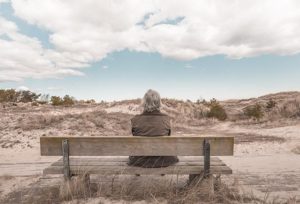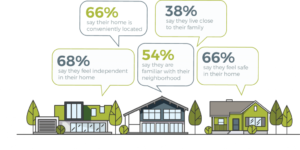Every Monday, we recap the most engaging mature marketing content from the previous week.
This week, Bisnow reveals the factors that will cause a housing crisis for baby boomers and millenials in the coming years.
Also, Home Advisor details the steps that need to be taken in order to ensure that more baby boomers are prepared to age in place.
MOST CLICKED: Housing Crisis Nears for Baby Boomers and Millenials
When it comes to housing, Baby Boomers and Millenials have more in common than we originally thought.
According to Bisnow, the State of the Nation’s Housing report reveals that Baby Boomers and Millenials will be experiencing a shared housing crisis at in the near future.
The report, written by the International Longevity Centre, states that more older adults are choosing to age-in-place in their own homes, though most of their homes have not had the necessary alterations made in order to make them suitable for aging in place.
To add to this, the retirement housing supply gap is set to worsen, making for fewer homes for senior adults to move into when the time comes that they are unable/unwilling to live alone any longer.
When seniors do age-in-place, a lot of their homes are underoccupied thus creating a scarcity for Millenials who are looking make their way onto the property ladder. There simply won’t be enough housing for everyone.
For senior living industry professionals, it is essential to provide older adults with the choices and resources they will need whether they choose to make the move to a community, or decide to continue living at home for as long as possible.
While many older adults may have their hearts set on remaining at home, this is an opportunity for 55+ and senior living marketers to convince those who are on the fence about a move. Currently, there are not enough caregivers to meet the demands of those wishing to age at home, and most of their homes aren’t equipped to meet their needs as they age.
Really emphasize how your community will address these needs for older adults in your marketing. Will home maintenance be an issue? Is there technology in place that will help make their lives easier? What programs does your community have in place to ensure optimal wellness and vitality for residents?
If your community marketing can answer these questions for people who are unsure about making the move, you may just succeed in converting a few seniors who originally intended to age in place. This will in turn create openings for Millenials to become home owners.
Click here for more information about the potential housing crisis.
MOST SHARED: 75% of Boomers are Unprepared to Age at Home
The 2016 Aging-in-Place Report by HomeAdvisor has revealed that three-quarters of aging Baby Boomers are not prepared to age in their own homes, despite their desire to do so.
Many Baby boomers have a negative perception of many in-home renovations that support aging-in-place. This is thought to be a key reason why so many of them remain unprepared.
According to Marianne Cusato, HomeAdvisor’s Housing Advisor, “It’s time to change the conversation from medically-oriented aging-in-place renovations, such as grab bars, to thriving-in-place projects that homeowners of any age can enjoy.”
The key things that need to be taken into consideration are the types of renovations and the way these renovations are being framed to the target audience. Baby Boomers want to live comfortably in their own homes, but they don’t want to be seen as “old” or “challenged.” This is why they are likely to reject many of the universal design additions that will make their homes suitable for aging-in-place.
Items such as grab bars can be off-putting to boomers because, once again, it reminds them that they are getting older and that they have a disability, when they don’t see things that way.
On the other hand, the addition of smart-home technology speaks less towards disability and more towards convenience and independence. Applications that allow homeowners to control home security, thermostats and lighting aren’t necessarily age-specific, but will enhance the in-home experience for older adults.
In order to ensure that older generations are better prepared to age in place, it is important that they, along with their friends, family members and professionals in the senior products and services industry are educated about the options that are available to them.
As marketers in the senior living industry, we should be the ones initiating these conversations.
Rather than emphasizing features such as grab bars which have a negative age-in-place perception, we should be emphasizing all the technology that has been developed in order to promote the idea of thriving-in-place.
Click here to read the 2016 Aging-in-Place Report in its entirety.




